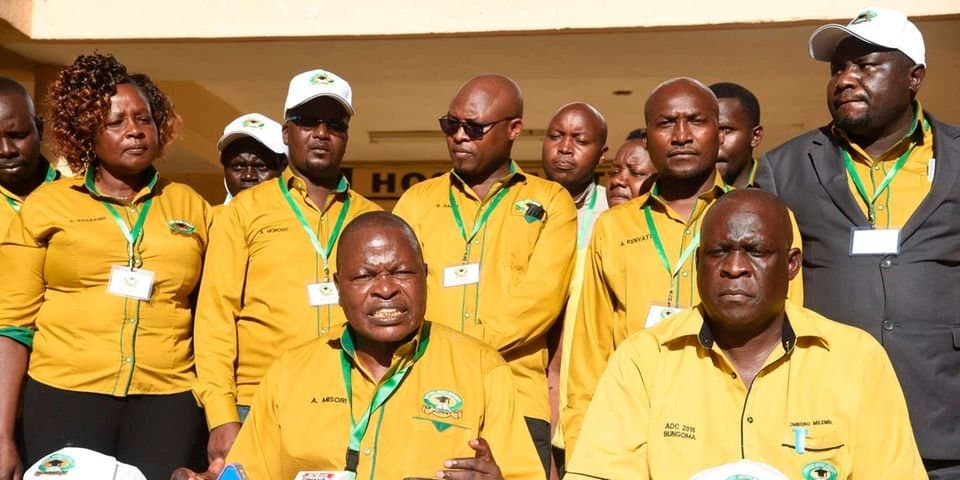Loading News Article...
We're loading the full news article for you. This includes the article content, images, author information, and related articles.
We're loading the full news article for you. This includes the article content, images, author information, and related articles.
The Ministry of Education is developing a revised, affordable fee structure for Senior School (Grades 10-12) under the Competency-Based Curriculum (CBC) to address parental concerns about the cost of education.

The Ministry of Education (MoE) is actively working on a new fee structure for Senior School, encompassing Grades 10, 11, and 12, under the Competency-Based Curriculum (CBC). This initiative aims to alleviate financial pressure on parents as the first cohort of Grade 9 learners transitions to Senior School in January 2026. Dr. William Sugut, Director of Secondary Education in the Ministry of Education, confirmed that a team comprising school principals and MoE officials is developing the revised figures, which will be affordable and vary based on the chosen learning pathways and school clusters.
Kenya's education system is undergoing a significant transformation with the phased implementation of the Competency-Based Curriculum (CBC), which began in 2017, replacing the 8-4-4 system. The CBC framework, structured as 2-6-3-3-3 (two years pre-primary, six primary, three junior secondary, three senior secondary, and three university), focuses on developing competencies such as critical thinking, creativity, and digital literacy, rather than rote memorisation.
Despite the government's commitment to CBC, parents have consistently raised concerns about the high cost of the new curriculum, citing expenses for learning materials and hidden costs. The Kenya National Parents Association chairman, Nicholas Maiyo, previously urged private schools to involve parents in fee-related decisions. The government has, however, maintained that assignments under CBC do not require additional printing or resources from parents.
Senior School will offer three distinct pathways: Science, Technology, Engineering, and Mathematics (STEM); Social Sciences; and Arts and Sports. This specialisation begins at the end of Grade 9, with placement into these tracks depending on examination scores. Starting in 2026, the traditional school categorisation (national, extra-county, county, and sub-county) will be phased out and replaced with a system based on the CBC pathways offered—triple or double pathway schools—to ensure equitable access to career options.
Education consistently receives the largest share of the national budget. In the Financial Year 2025/2026, the education sector has been allocated KSh 702.7 billion, representing approximately 16.6% of the total budget of KSh 4.239 trillion. This allocation includes KSh 387.2 billion for the Teachers Service Commission, KSh 51.9 billion for Free Day Secondary Education, and KSh 28.9 billion for Junior Secondary Capitation.
To support the transition, the government has invested in infrastructure, constructing 14,500 classrooms out of a targeted 16,000 for Junior Secondary Schools. An additional 7,290 classrooms are planned to accommodate increased enrolment. The Ministry of Education has also directed schools to repurpose existing spaces for practical learning and utilise the annual KSh 4,000 per learner allocation for laboratory improvements.
Addressing teacher shortages, the government has employed 56,000 permanent and pensionable teachers and 20,000 interns. All Junior Secondary School teachers have undergone retooling to acquire the necessary pedagogical and content skills for the new curriculum, with a prioritisation of science, mathematics, and technical teachers. Mathematics has also been made compulsory for all Senior School students, reversing an earlier policy.
While the Ministry of Education assures timely capitation disbursements, stakeholders, including the Kenya Primary Schools Headteachers Association (Kepsha), have highlighted a significant funding gap in primary schools, where capitation remains KSh 1,400 annually compared to KSh 15,000 for Junior Secondary. The Kenya Secondary Schools Heads Association (KESSHA) has proposed annual fees of KSh 73,182 for national schools (Cluster 1), KSh 60,023 for extra-county and county schools (Clusters 2 and 3), and KSh 5,372 for day schools (Cluster 4).
The final, officially approved fee structure for Senior School is yet to be publicly communicated by the Ministry of Education. The extent to which the proposed fees by KESSHA will be adopted, and how the government plans to bridge the funding disparities across different education levels, remains to be seen.
Parents and educators will be keenly awaiting the official unveiling of the Senior School fee structure by the Ministry of Education. Further details on the disbursement of capitation funds and strategies to address infrastructure and teacher shortages, particularly in specialised pathways, will be critical for the smooth implementation of the CBC in Senior School.
Keep the conversation in one place—threads here stay linked to the story and in the forums.
Other hot threads
E-sports and Gaming Community in Kenya
Active 6 months ago
Popular Recreational Activities Across Counties
Active 6 months ago
The Role of Technology in Modern Agriculture (AgriTech)
Active 6 months ago
Investing in Youth Sports Development Programs
Active 6 months ago